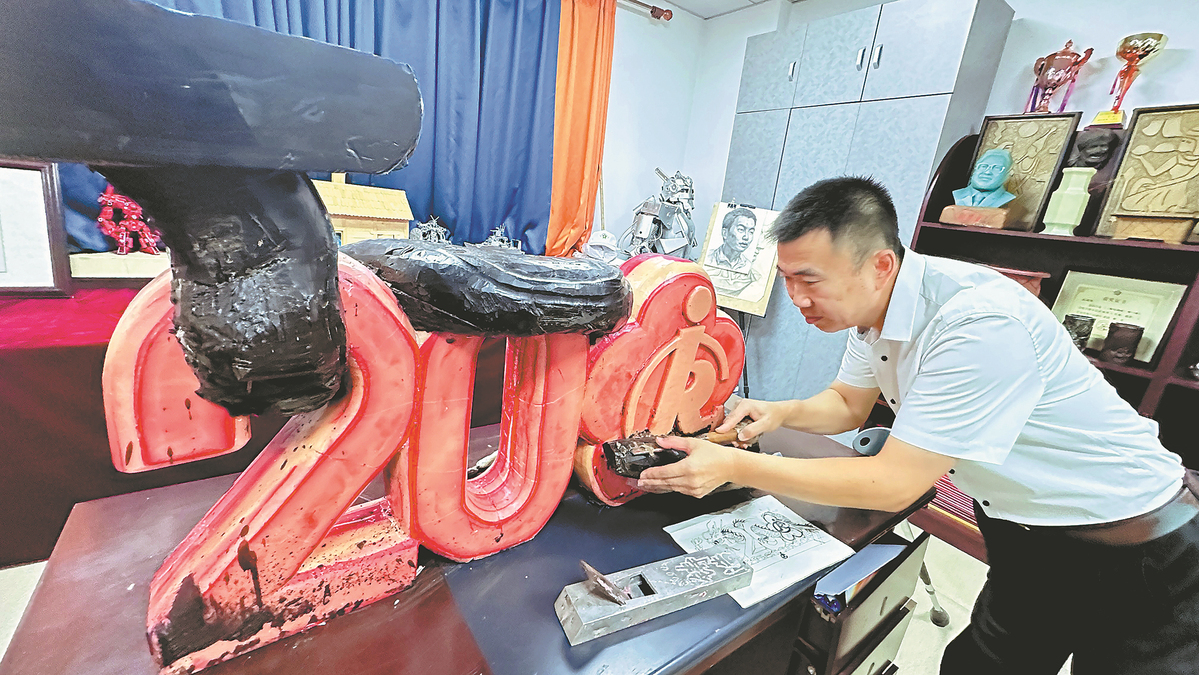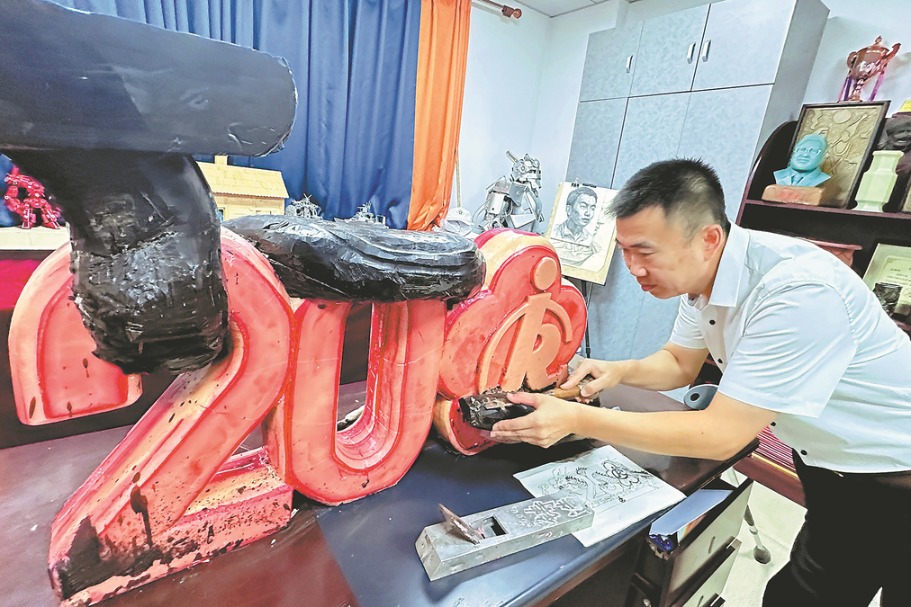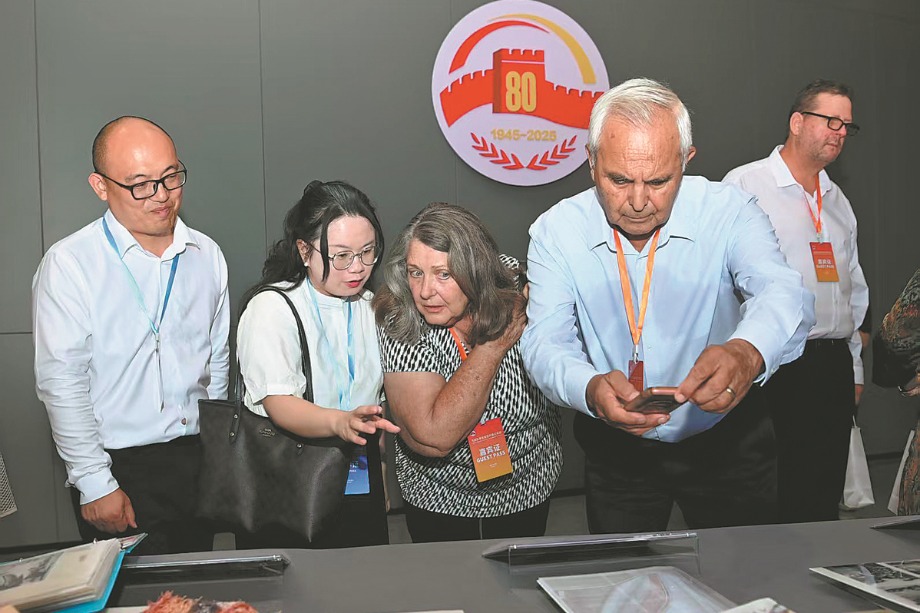Harbin wax carver overcomes polio to inspire other disabled people
Artisan uses skills to help people like him find job opportunities


Despite being left with a disability in his left leg due to polio at a young age, Wang Jianhua has never given up on himself.
After years of research, the 57-year-old applied for a patent for raw materials of wax carving crafts and became well-known as the "leading craftsman of wax carving in Heilongjiang province".
As chairman of the Association for People with Physical Disabilities in the Pingfang district of Harbin, Wang actively provides services to the disabled, such as disseminating knowledge about disabilities and organizing rich and colorful extracurricular activities.
"When I was 7 months old, I was diagnosed with polio. The most vivid memories of my childhood are of my parents taking me to hospitals in different cities for treatment," he said. "However, my condition of being crippled hasn't changed. After 1990, when I had my last surgery, we gave up seeking treatment."
In 1983, Wang began working as a front-line foundry worker in a local factory.
From then on, he began to create some handicrafts with wax, which attracted attention from his colleagues, local media and the local disabled persons' federation.
In his childhood, he spent much of his time at home due to his disability, he said. And he found great interest in arts such as paper cutting and drawing, which helped him "kill boring time".
"At that time, we often experienced power outages and would light candles," he said. "I discovered that the wax drippings from the candles could be molded into shapes, so I tried making small sculptures, such as animals and flowers, from wax."
The Pingfang district's disabled persons' federation provided a room for him to use as a studio, giving him a place to focus on honing his wax carving skills, he added.
From then on, Wang began to delve into more challenging areas, constantly adjusting the flexibility and color of the wax.
"At first, I used the dissolved candles as raw material, but the colors of the candles were rather monotonous, usually only white and red, so I bought various colored crayons and dissolved them in the candle solution," he said. "However, I found it increased the cost significantly, and the material of the candles was not very tough, making them prone to cracking."
Later, Wang bought some industrial wax and tried various pigments, such as chemical dyes and the fuel used for dyeing fabrics.
To improve toughness, he added materials like rosin and polyethylene to the solution.
"Finally, I found the optimal ratio and color combination," he said. "In 2005, I applied for a patent for raw materials of wax carving crafts, providing the best raw materials for my wax sculpture creations."
Over the past years, Wang has created hundreds of wax sculptures. He sent some of them to his friends as gifts and also sold some, he said. "I donated the revenue from the sales to departments or projects related to disabled groups."
While mentioning his success in researching wax carving, Wang believes it is inseparable from the support of the district's disabled persons' federation.
"Over the years, the federation provided my family with daily necessities and financial support," he said. "Because I am disabled, I pay special attention to the disabled community and made a silent promise to myself that once I had the ability, I would do something for other people like me."
To inspire more disabled people to unleash their artistic potential, he invited them to join in his wax sculpture studio and recommended that they learn techniques such as wax sculpture, paper cutting, and ink painting.
Further, Wang actively communicated and contacted enterprises, helping more than 20 disabled people get job opportunities.
In 2019, Wang started his account on a social media platform, popularizing practical knowledge about disabilities via short videos, which have attracted over 100,000 followers so far.
From 2021 to this year, Wang kept up with the rapid development of the internet and mobilized disabled people around him to learn new technologies such as online livestreaming sales and video editing.
He held training courses on making short videos, attracting over 200 disabled participants.
"In recent years, the social security policies for the disabled have been gradually improved, and the care system for them has been further enhanced, which has greatly promoted the development of work for those disadvantaged people in Pingfang," said Wei Chunying, chairman of the district's disabled persons' federation. "The work of Wang can help the disabled enhance their sense of happiness, enable them to better integrate into society, and also make them feel highly respected.
"Therefore, within our capacity, we will provide as much support as possible for him," she added.
zhouhuiying@chinadaily.com.cn





































